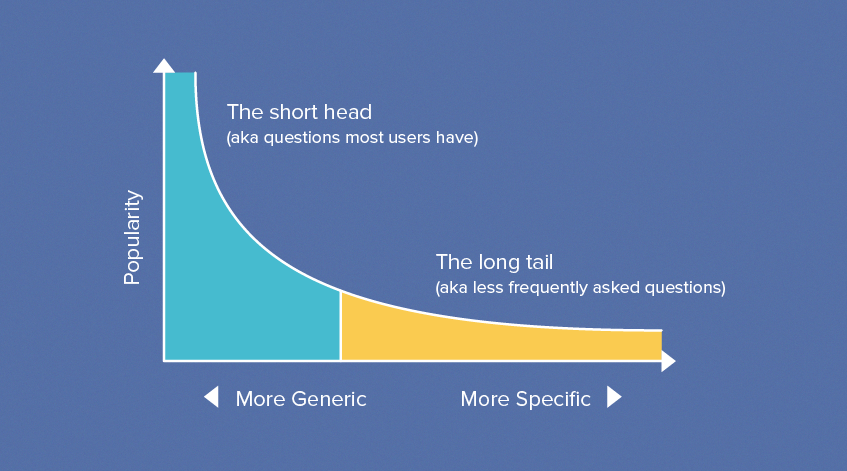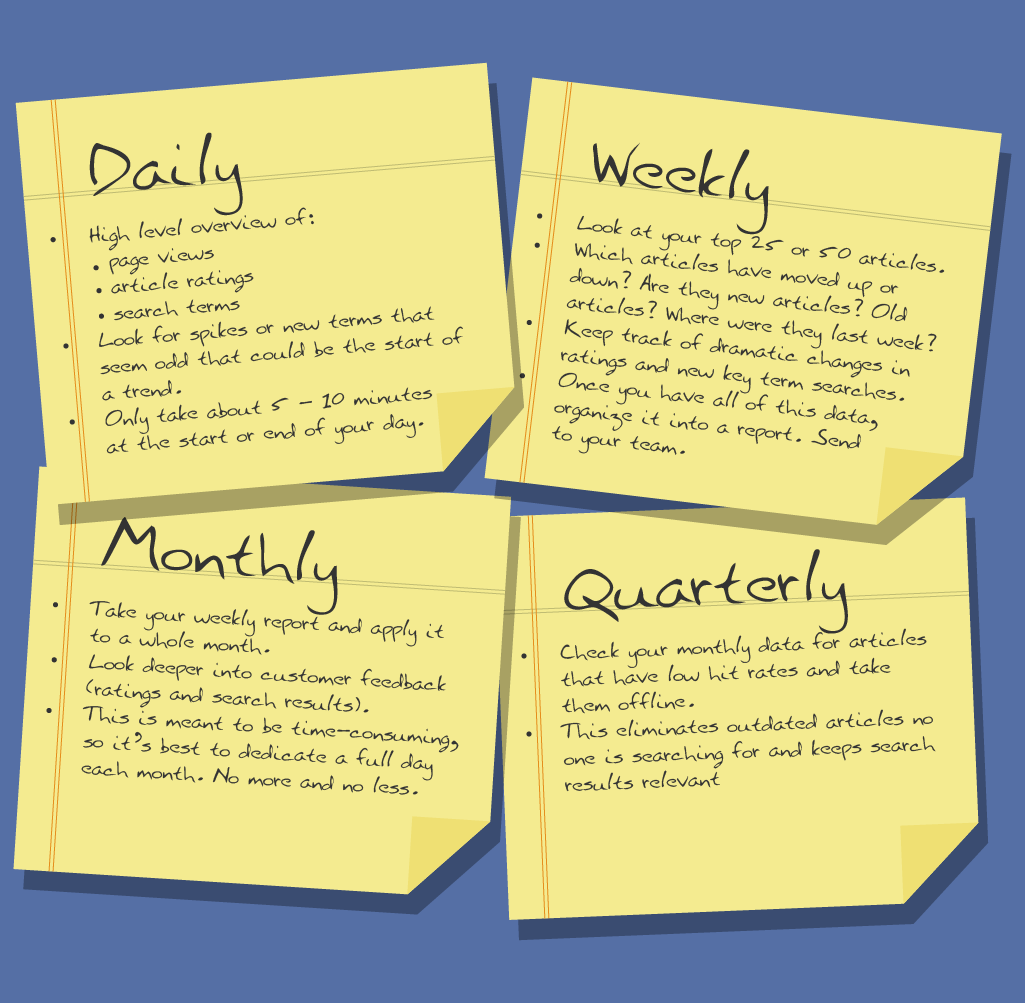In What Goes into a Help Center Audit, we cover the eight basic steps of what to look for in your help center. In this post, we’re going to dive a bit deeper into those steps and how to cover them without your head exploding.
Managing your help center content is the most important way to keep your self-service channel healthy and relevant. Once you get the hang of it, it even becomes an easy part of your routine.
First, let’s take a step back and define “content.” You have two basic types:
- Documents and other items, such as help articles or videos.
- Text, links, and other elements within those items.
For this post, we’ll focus on a general audit of help articles as a collection and the content within each article.
What do you review?
There are a lot of great data points to check in a help center audit, but let’s revisit what to focus on around your content.
(Note: The steps below are designed for support centers for medium to enterprise-size businesses. For small businesses, it’s never too early to start these types of audits as they will come in handy when you begin to scale.)
Database size
How many articles do you have? If you have a single product and have over 500 articles, chances are you have too many and can archive a bunch of them.
Views/hits
How quickly does the the head drop off into the long tail over a one month period? If your help center gets thousands of hits per month, look to the articles with views in the single and low double digits first. Start trimming that tail from the very end and work your way up. You’d be surprised how many customers and reps won’t complain.
Magnitude
This is a fancy word for importance (how often an article is used) or criticality (how much the issue affects the customer or brand if not addressed).
Is there an article that only gets 30 views out of your database’s 10,000 monthly total, but solves a major landmine that can dramatically affect the customer with your brand? Might want to keep it in there.
Sunsetting
Are there any articles that apply to old versions of your product? If they are popular and have relevant content, update them for recent versions and features.
Customer ratings
Archive extremely poorly performing articles for review and then republish. Make sure that you track your publishing dates to look for changes in metrics.
Search box harvest
This is a gold mine of customer input data if your search utility has it. Look for keywords and phrases that are missing the mark for articles you’ve created or ones you are missing. Are customers finding what they are searching for? Do article titles match the inputs?
Bonus bravery points for copying and pasting customer search phrases into your search engine and then into Google to compare results.
When do you review?
Auditing is like clearing your browser’s cache. Doing it once isn’t good enough. Audits should be done regularly — it’s a part of maintaining a healthy help center.
I recommend creating an auditing schedule, although it’s up to you to decide just how often. Here’s why:
- Regular content audits ensure that you are connected to customer trends and satisfaction ratings. When you get a regular audit schedule going, you’ll be able to put your finger on what’s working, what’s not working and what kind of content your customers need.
- The time frame you choose to do your reports in (a day, week, or month worth of data) changes the results.
Content views over the course of a day versus the course of a week can show very different trends and volumes. What seems like a major trend one day is a blip on the radar for the week.
- Audits are time-consuming. They require not just data analysis, but content analysis too. In all those numbers are actionable items to improve your self-service and customer experience and that may require quite a bit of research in some cases.
With that in mind, this is a schedule that has worked very well for me:
Daily
This is how you want to start (the previous day’s data) and end (current day) your work day. A very high level overview of page views, ratings and search terms that have been collected. Look for any spikes or new terms that seem odd that could be the start of a trend. It should only take about 5 – 10 minutes.
Weekly
This is a little more involved than the daily routine. Look at your top 25 or 50 articles. Which articles have moved up or down? Are they new articles? Old articles? Where were they last week? Keep track of dramatic changes in ratings and new key term searches.
If you have multiple localizations, take a peek at those as well to see if there are any dips or spikes. Once you have all of this data, organize it into a report. Send to your team. (You may want to cc your dev, marketing, and product teams too.)
Monthly
Take your weekly report and apply it to a whole month. In this report, look deeper into customer feedback. This is meant to be time-consuming, so it’s best to dedicate a full day each month. No more and no less.
Quarterly
Check your monthly data for articles that have low hit rates and take them offline. This eliminates outdated articles no one is searching for and keeps search results relevant
The best way to do this is to create your own help center audit template to make your record keeping easier. You can grab ours to start! Every company has a different support journey, so it’s likely you’ll make change our template to fit your support experience. Ready to start auditing? Let’s do it!




